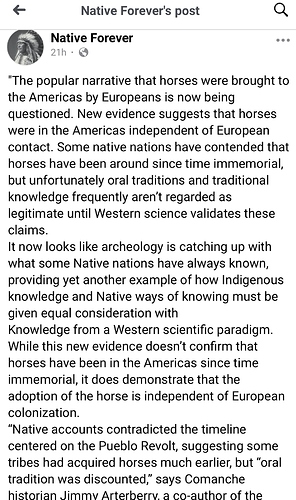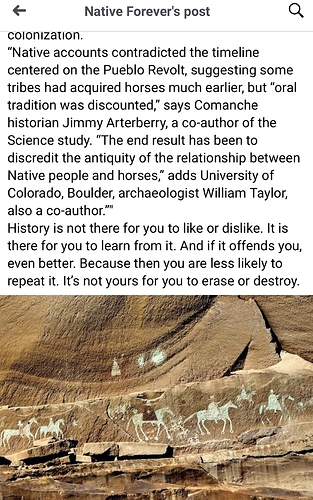That is explicitly addressed in the Science article I posted, at least as far as they can know: “There is, however, no direct evidence that Viking horses reached settlements on the mainland ( 11 ).” It is not impossible, but without evidence there is no reason to say it happened.
Also, thinking of the indigenous cultures for which the horse was an important part, as far as I know those were all far from areas we know the Vikings visited.
Edit to add:
I should add to my posts that while I am skeptical of horses surviving their supposed extinction in North America, as opposed to being re-introduced in the 16th century, I am skeptical in the sense of “show me some proof,” not in the denialist sense.
When unexpectedly old human footprints were found in New Mexico, there were some doubts about the accuracy of the dating. Scientists didn’t sit on their hands and say “it doesn’t sound right to me” or “of course it was right!” They thought about different ways to date the footprints, and when the different methods gave the same result, the age of the footprints was widely accepted.
I also think about evidence of horses in relation to some things I have read about dogs in the Americas pre-European contact. A few years ago a study found that there is nearly no modern genetic evidence of the dogs that came with earlier inhabitants – that is, except for some tiny regional populations, current dogs get all their DNA from dogs brought to this country in the last several centuries, mostly from Europe. Yet studying older skeletons in a very similar method to the Science article study of horse skeletons has yielded DNA that is a closer match to dogs in Siberia. This is what the study of horse skeletons has so far failed to do. (Not the relation to Siberia part, obviously, but the not-European part.)




 and pre-conquest wouldn’t have open fields.
and pre-conquest wouldn’t have open fields.